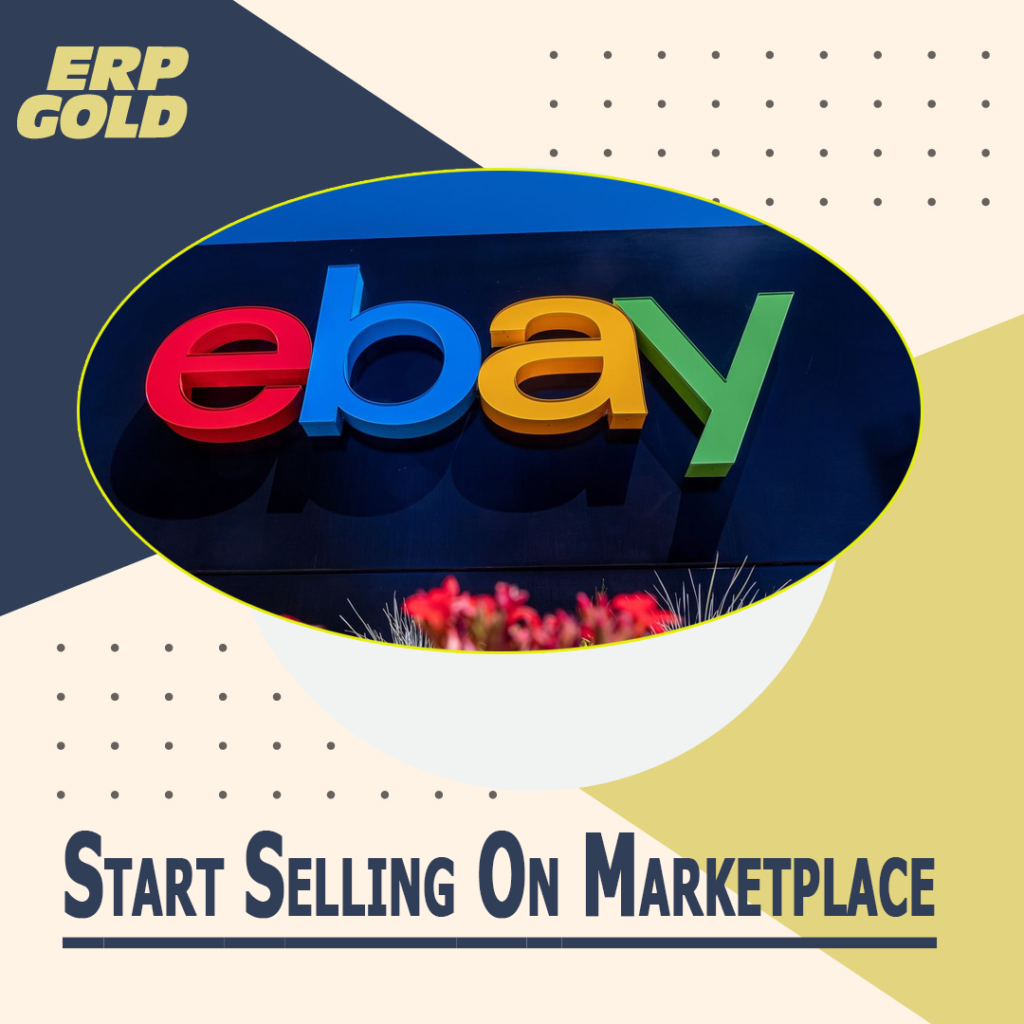eBay is the place to go if you want to sell stuff. If you have products that are no longer needed or wanted, just let eBay know about it and they will put them in the hands of people who can use them. They also have a large selection of marketplaces for electronics, clothing, hardware, and much more.
While eBay started as an auction-based marketplace for secondhand products and collectibles, it has gradually evolved into a fixed-price marketplace. It’s also a terrific location to sell brand-new items.
Indeed, fixed-price or “Buy It Now” ads account for 90% of eBay’s Gross Merchandise Volume (GMV), illustrating its tremendous transition away from its auction market beginnings.
The beauty of eBay is the universe of possibilities available to sellers: you may post products at set or auction pricing, use your own product photographs, add your own descriptions, and sell (almost) anything.
Should you lose your items on eBay?
Anyone may quickly create a seller account and begin selling on eBay, which is most likely why there are around 17 million eBay sellers!It’s very simple to get started as an eBay seller. You may establish an account, list a product, and sell it on the same day.If you have outdated items lying around the house, selling them on eBay may be a simple way to get rid of them while generating some money.
Your amount of success on eBay is entirely up to you; what began as a decluttering project might easily evolve into a constant side hustle or perhaps totally replace your existing income. If you currently sell on Amazon, you should be aware of the following important differences between selling on Amazon and eBay:
- Instead of fighting for the Buy Box on a single listing for a popular product, each eBay seller may design their own unique listing.
- eBay provides merchants with more extensive listing optimization than Amazon does.
Step 1: The Fundamentals Of eBay selling
Selling on eBay is straightforward: the seller posts the item, the client purchases it, and the order is completed. We’ll go through what this all implies in general in this stage.
The beauty of selling on eBay is that you can start small. Look around your house for anything that is accumulating dust—everyone has outdated gadgets, books, or toys collecting dust. Product sourcing involves almost little upfront expenditure.
After selling unwanted goods from their homes, eBay entrepreneurs are often bitten by the e-commerce bug and want to launch full-fledged eCommerce enterprises.
Learning the fundamentals of what to sell on eBay early on may help turn a new eBay business into a reliable additional revenue stream or perhaps a major source of income.
Are you still persuaded that you need to launch an eBay business? If not, let’s go through some of eBay’s most frequent business models (i.e., what to sell).
eBay is well-known for being one of the finest locations to find odd stuff. It has since developed, and 79 percent of all things sold on eBay’s 1.5 billion current active listings are brand-new stuff.
Step 2: How to create an eBay Seller Account
- Signing up to sell on eBay is a simple procedure. Your company might be up and operating in an hour!
- Go to the Create an Account page and fill out the required sections with your name and email address. After that, you’ll establish a password for your account.
- After clicking “Create an account,” you’ll be sent to the eBay site to be logged in to your new account. EBay will generate a username for you, but you may alter it under the “My eBay” area by clicking on “Account,” then “Personal Info.”
- Add your bank account before creating listings, so you know where the money from your product sales will go.
Include a payment method.
By adding your checking account, you will be able to collect payment from client purchases on your desired payout schedule.
- Find the “My eBay” dropdown menu in the top right corner of the eBay main page and select “Selling.”
- Then, choose “Account.”
- You’ll find “Payment choices” under “Payments.” Fill in the details for the bank account where you want to receive money from eBay sales.
- Please keep in mind that eBay sellers were previously compensated using PayPal.
- On the other hand, eBay has declared that it will no longer accept PayPal as a payment method by the end of 2020. Instead, eBay adopted its own payment method, Managed Payments, which transfers funds directly to sellers’ bank accounts.
- eBay automatically deducts the selling fees from your sales revenues when you use Managed Payments before the distribution.
- Step three: Begin selling! It’s that simple—you’re now ready to post your products for sale on eBay.
Step 3: Conduct Product Research
On eBay, you can sell almost anything. You may already have an idea of what to offer or want some inspiration, whether you’re rummaging through your own garage for odds and ends or fantasizing about selling private-label goods. You’ll need to conduct some product research to determine which things are lucrative and at what pricing.
You should not sell just anything on eBay. If you truly want to be successful, you must first assess your product ideas for profitability, demand, and competition before listing them. You’ll be able to assure a return on your investment this way.
We’ll go through lucrative product concepts, how eBay fees affect profitability, how to assess demand and other product research requirements in this stage.
Step 4: Where can I get things to sell on eBay?
With so many various business models to select from, sourcing things for eBay may differ from sourcing products for Amazon.
Alibaba is a great place to find things from China.
Selling your own brand or private label product is a tried and true way to succeed on Amazon, and it also provides an excellent chance on eBay.
The private label strategy has the following advantages:
- You may build your own brand and product.
- High-quality pictures and a compelling description may help you stand out from the crowd.
- You can save money by getting your items from sources outside the United States.
Check out our new How to Sell on Amazon guide for an in-depth explanation on establishing and sourcing a private label product.
Locate things to resale at retail stores.
A traditional eBay business plan is purchasing and reselling things from Walmart, Target, or your local grocery shop. Retail arbitrage may be profitable if you are consistent and know what to search for.
Product research for retail arbitrage is simple—you can do it while you’re out shopping.
- Look for items in the clearance section, toy aisles, and electronics department—these sell well on eBay and can have significant profit margins depending on demand (more on this below).
- Scan barcodes using your phone’s eBay app to identify which goods have high sell-through percentages.
- To analyze the profitability of proposed items, use the Salecalc tool indicated in Step 3. Remember that you may charge clients for shipping to increase your profit margin.
Step 5: Listing and shipping your things
You can post goods on eBay in minutes—even on your phone. This also simplifies submitting product images since you can just choose them from your camera roll.
Using the skateboard as an example, I’ll demonstrate how to list an item using the eBay app.
How to List Your Products on eBay
Click on the first listing in the “Sold Item”-filtered search results.
Select “Sell One Like This.”
This takes you to the Listing Summary page. Essentially, you will have made a copy of the successful listing to utilize for your goods. Although eBay will auto-populate much of the product information, you should still double-check your listing to ensure it is as comprehensive as possible. Because the product has been used, ensure that its condition is appropriately reported.
I recommend that you change the title and description to don’t replicate the other seller word for word. Include any relevant keywords that clients are likely to search for while looking for your goods.
You need to measure and input your own weight and measurements for correct delivery charges.
Do not use another seller’s photographs—replace any copied images with yours. Take your product shots in decent lighting and catch every angle—customers will want to check the item thoroughly.
You will be able to pick between “Auction” and “Buy It Now” prices. “Buy It Now” is typically the best approach to lock in your desired price for most things. Accepting consumer proposals on your goods is an option if you’re ready to go lower.
Final Thought
Now that you understand the fundamentals of sourcing and selling things on eBay.
You are not required to visit all of the product-seeking stores. Do some internet study at home first, so you know what to look for in-store.
You may utilize a website called brickseek.com to find local and online goods offers that you can use with eBay. You can search Brick Seek by zip code, even down to particular shop inventory—just keep in mind that it isn’t always 100 percent accurate.

